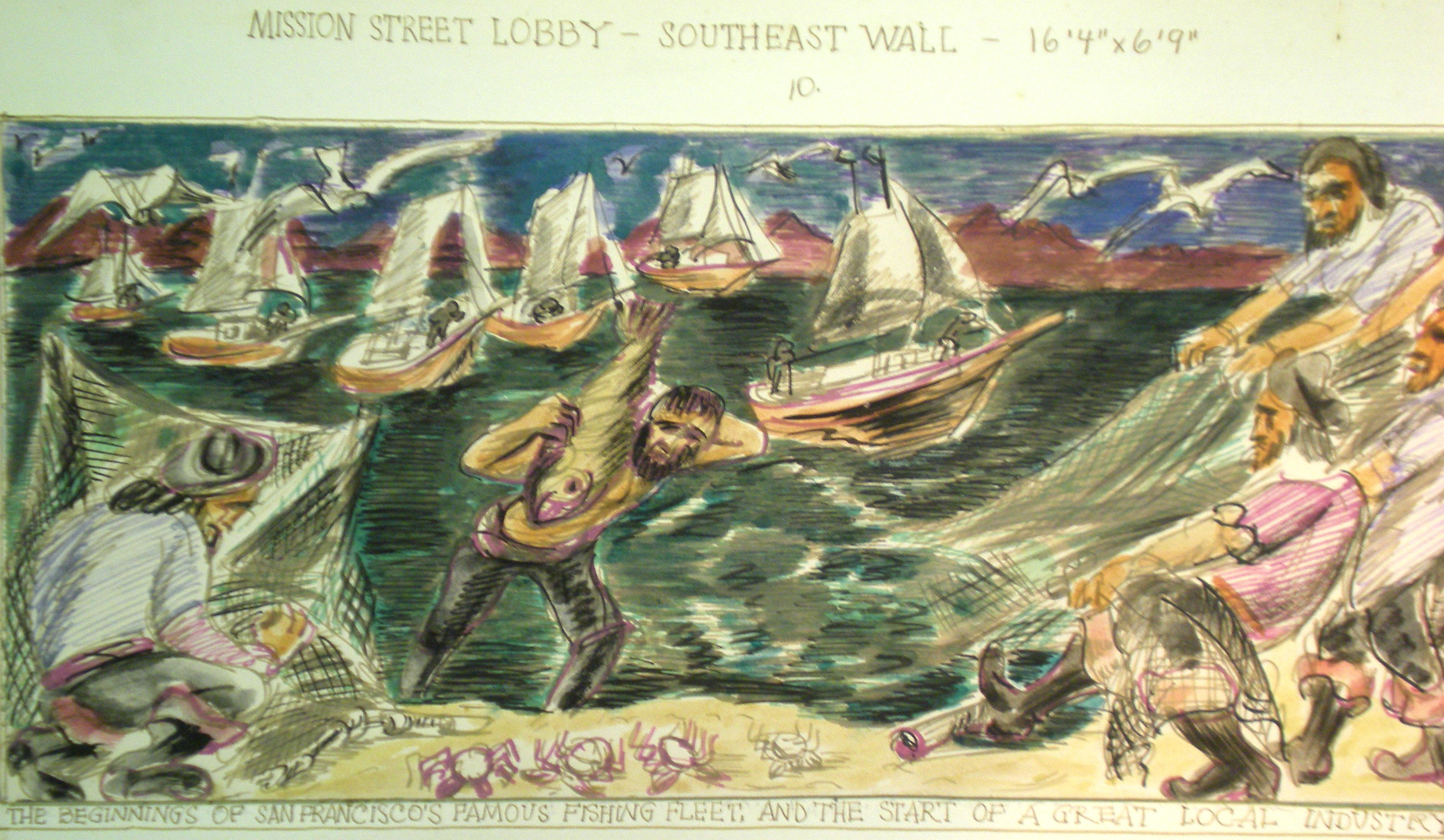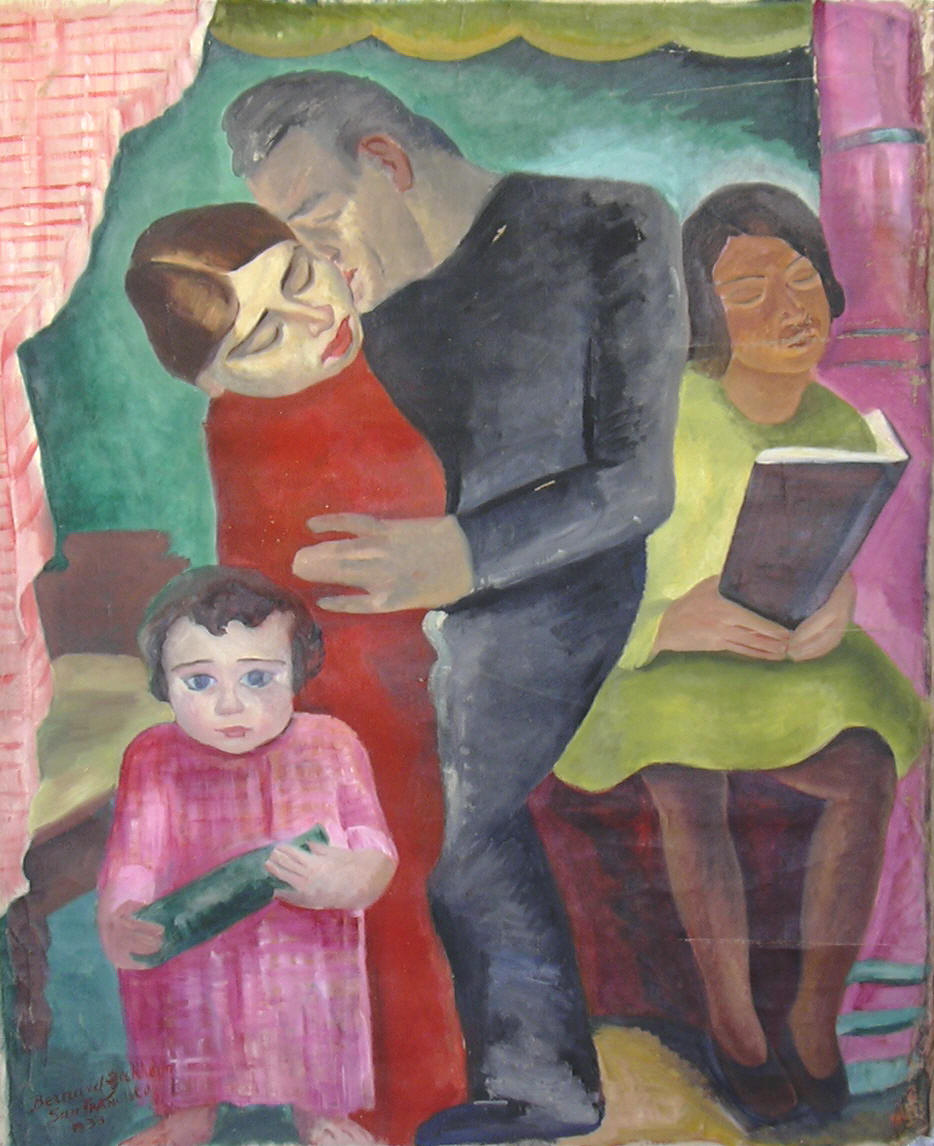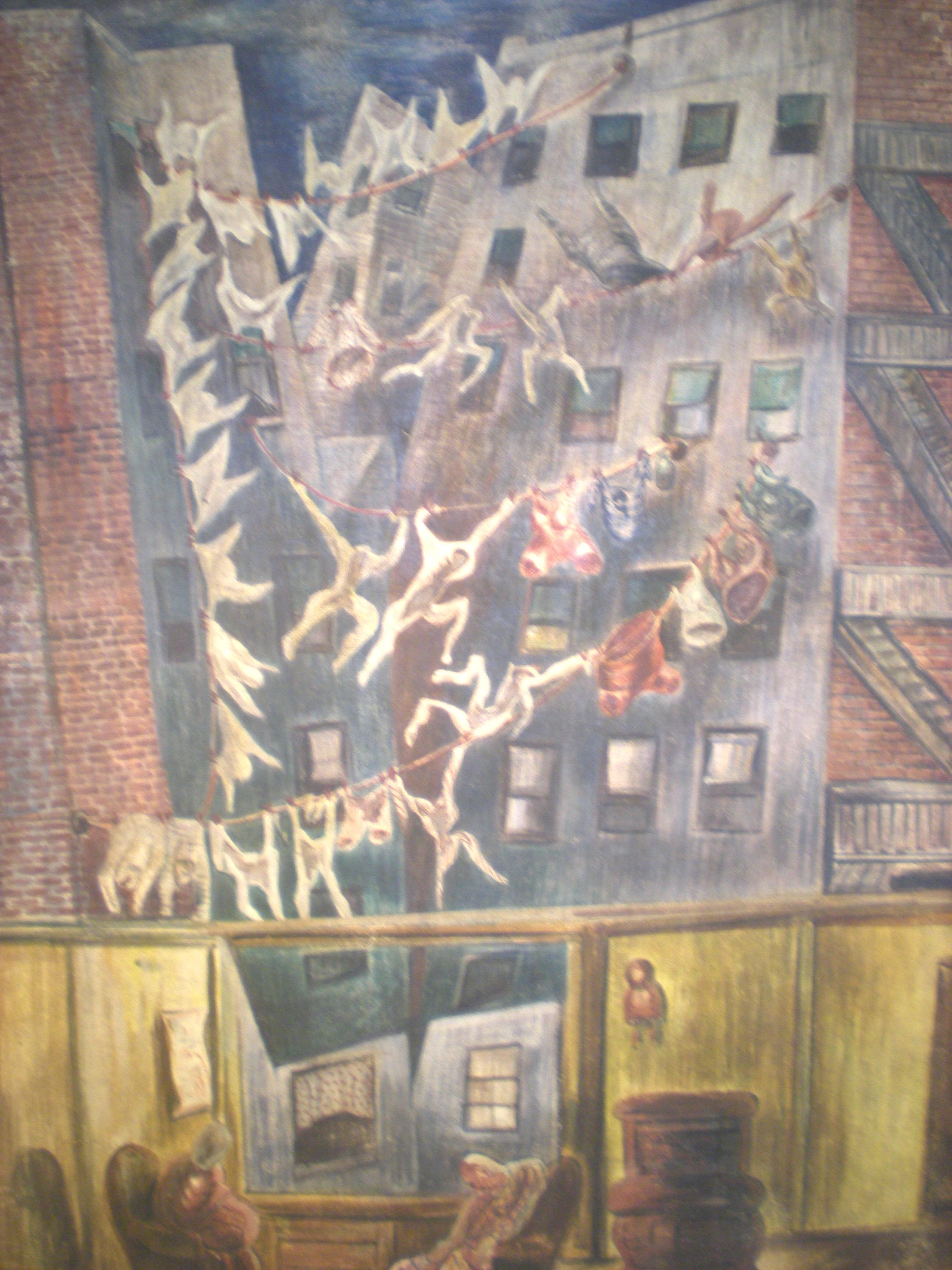
Mexican Market Scene
Signed and dated 1930
Watercolor 17.5 x 12”

Mexican Cantina
Signed and dated 1930
Watercolor 19.25 x 13.5

Boy with fruit
Signed and dated 1930
Watercolor 8.25 X 11"

Untitled 1931

Mexican Market 1931
On June 21, 1930 The San Francisco Call-Bulletin reported that Rivera, in admiring and praising Zakheim’s sketches of Hebrew life, declared, “every artist puts into his work something of his own soil, of his own people.”

Diego Rivera painting mural with assistants
oil on canvas, 39 x32”
signed and dated

Two assistants Louis Shanker and Frank Mechow
oil on canvas
signed and dated
Zakheim became active in promoting traditional Jewish folk life and Yiddish culture. On July 25, 1930 The San Francisco News reported that, “Zakheim is a leader in the Yiddish movement in San Francisco. {As with} the present revival in literature, {the art is based} on the assumption that the Jew can most contribute to world culture if he possess himself of a culture, which exactly interprets his artistic will.”

Jews from
Poland to Israel #1
Signed and dated 1927
Oil on
canvas 31 ½ x 39”
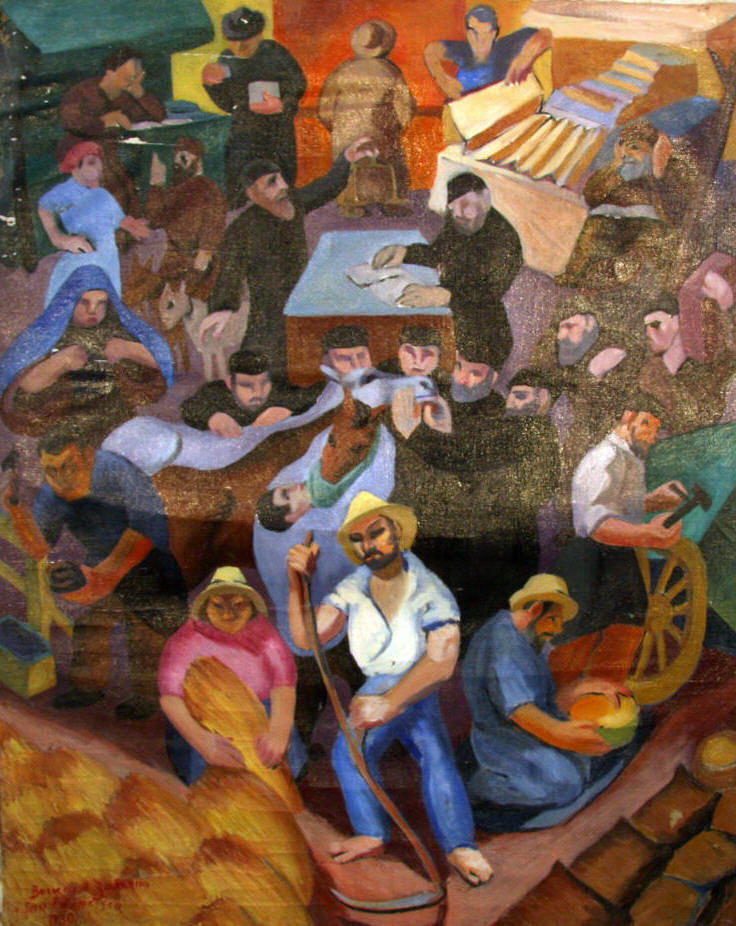
Jews from Poland to Israel #2
Signed and dated 1930
Oil on canvas 29 ½ x 37”

Jews from Poland to Israel #3
Signed and dated 1932
Oil on canvas 29 x 37”
Ancient Jewish Wedding
Mural
Jewish Community Center San Francisco
Dated:1933
The press coverage was positive. The San Francisco Examiner observed in July, 1933,
“Most painters of Judaic life of the biblical period have chosen to stress the moral and religious qualities which we today call Puritan. Zakheim, however, has given us a radically different interpretation. He has chosen to represent the festive side of the ancient Hebrew character.”
Franklin Delano Roosevelt agreed to support the many artists who were struggling to make a living during the Great Depression. In 1932 federal money became available for a major art project for the inside of the newly constructed Coit Tower monument to the firefighters of San Francisco. Herbert Fleishhacker, the head of the conservative Coit Advisory Committee agreed to hire these young artists not just because he liked their art but because he believed that this would keep them too busy to participate in the strikes and volatile labor unrest that reached a peak in the San Francisco general strike in 1934. Because of their work with Diego Rivera and the fact that they were the only artists in the group who had actually done a fresco mural, Herbert Fleishhacker ask Ralph Stackpole, 1885-1973 and Bernard Zakheim to help organize the Coit Tower project..

Zakheim in front of oil painting of Jewish Patriots

Coit Tower mural showing panel by Bernard Zakheim 1934
Zakheim painted a
representation of the main reading room of the public library and he
included an image of his friend artist John Langley Howard reaching for
a copy of Das Kapital by Karl Marx. The Poet Kenneth Rexroth suggested
many of the other books in the mural which reflected their political ideals. Zakheim reciprocated by placing his friend on a ladder
reaching for a book on the top shelf.
Zakheim was asked two times to remove Das Kapital from his mural, the
second time by Fleishhacker personally and Zakheim refused. Zakheim also
prominently placed books with Hebrew inscriptions, identifying them as
the Torah, the Prophets, and the Writings.
These books together comprise the Old Testament and form the pillars of
the Jewish world view.

San Francisco Longshoreman
1934 watercolor
18 x 24”
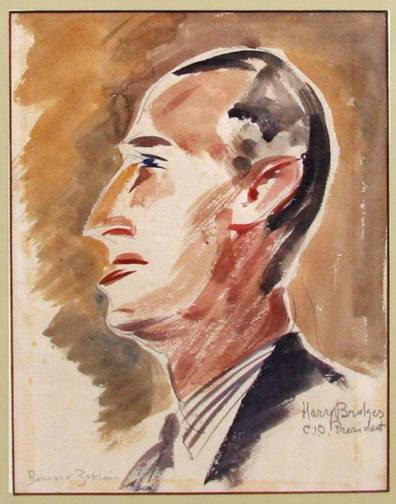
Harry Bridges
1934 watercolor
18 x 24”
The Coit Tower mural project led to a commission for a fresco at the
Alemany Health Center in San Francisco, 1935.
From 1935 to 1938 he completed the "Story of California
Medicine" a W.P.A. mural with 10 panels at the UC Medical Center in San
Francisco.

At work on the History of California Medicine University of San Francisco medical school 1936-37
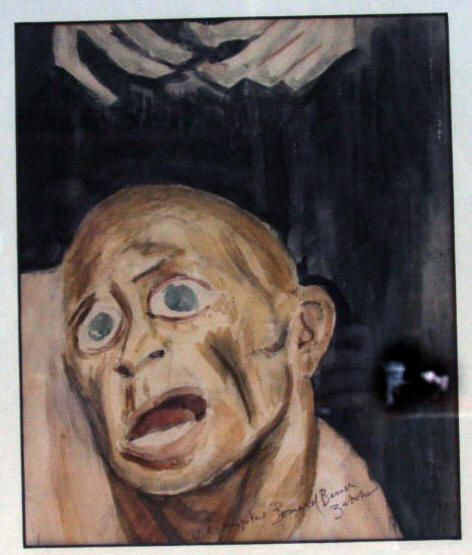
Detail from Primitive Medicine Fresco
Watercolor 10 x 12”
sketch for U.C. mural detail

Primitive Medicine 1935

Rational Medicine 1938
During the mid 1930’s Bernard Zakheim also completed two more WPA murals, one in Minneola, Texas and the other in Rusk, Texas.

Modern Transportation meets Obsolete Transportation
(egg tempura marouflage)
Minneola, Texas 1936

Rusk Texas 1937
"Gorgeous Francesca Hart, Paris 1932"
Untitled (The Family)
Signed and Dated 1933
Oil on canvas 42" x 34"
Sold
Backyard clothesline
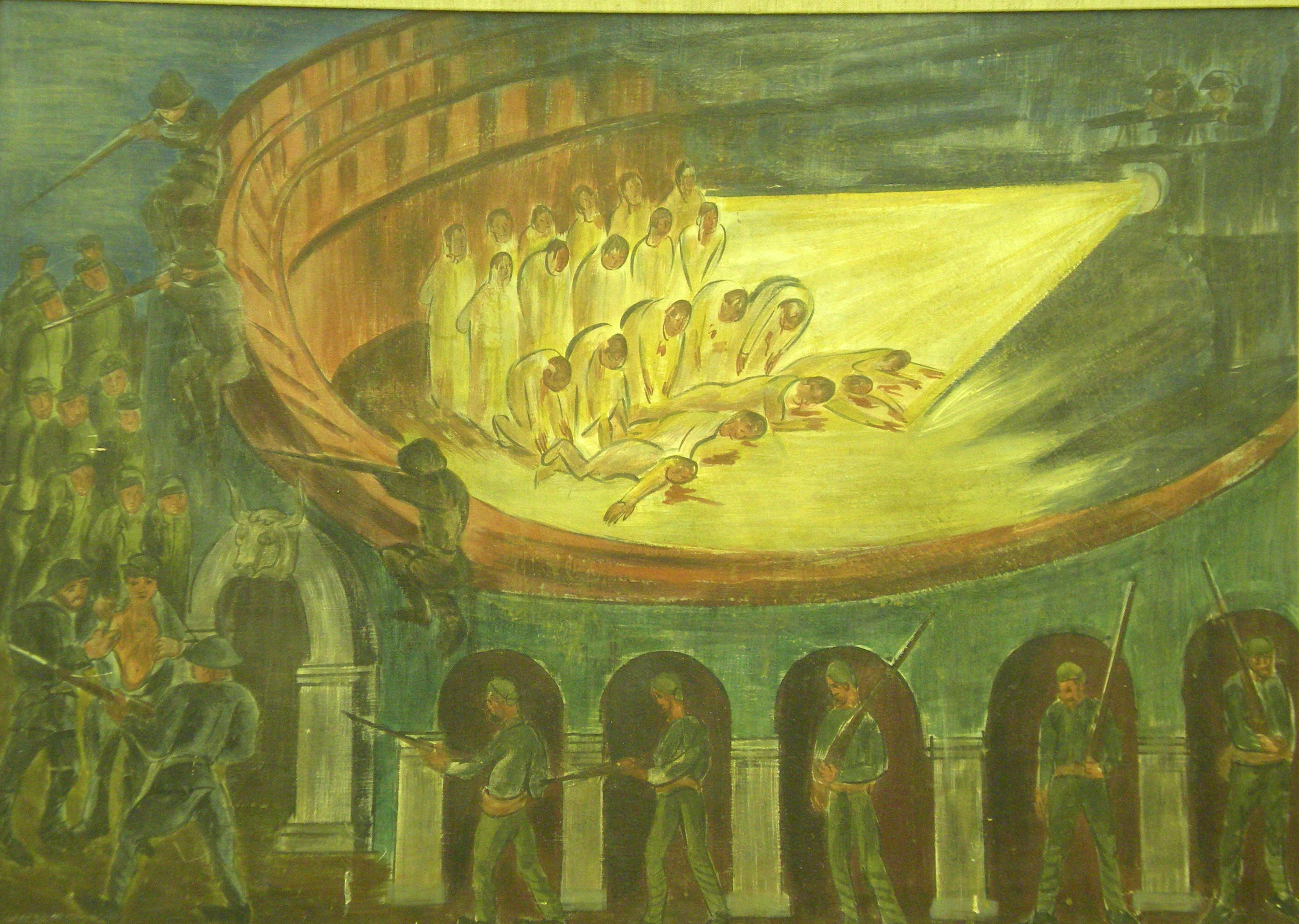
Mass Executions in the Stadium 1939 watercolor

"Penny-Catcher" used to collect
money for the Spanish Civil War
1939
Four Studies for WPA murals



